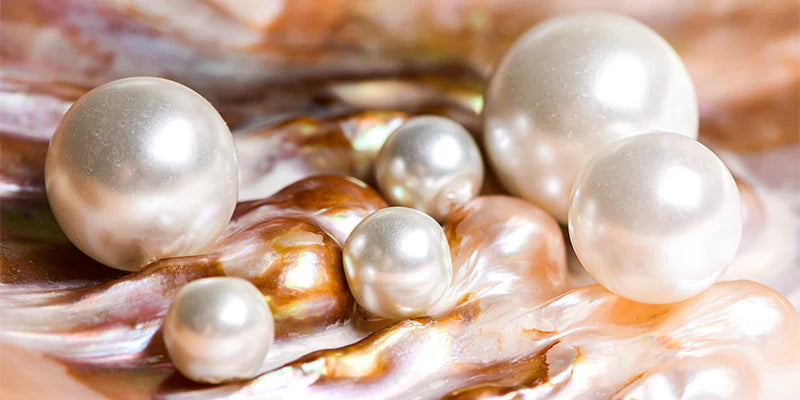
How to Identify Real vs. Fake Pearls: A Simple Guide for Shoppers
Share
In an era where fashion and luxury often meet mass production, knowing how to identify real vs. fake pearls has become essential for mindful shoppers. At House of Panther, we believe true elegance begins with authenticity. Whether you're investing in a family heirloom or choosing your first piece of pearl jewelry, understanding how to spot genuine pearls will help you shop with confidence.
Here’s your simple, practical guide to distinguishing real pearls from imitation pearls—without needing a gemologist.
🧐 Why It's Important to Know the Difference
Genuine pearls—whether Freshwater, Akoya, Tahitian, or South Sea—are formed naturally or through cultured processes involving live oysters. This makes them rare, valuable, and one-of-a-kind. On the other hand, fake pearls are usually made from plastic, glass, or shell coatings and mass-produced.
Knowing the difference protects your investment and ensures you're paying for authentic luxury.
🔍 7 Easy Ways to Identify Real Pearls
1. The Tooth Test
Gently rub the pearl against the edge of your front teeth (not your gums).
- Real pearls feel slightly gritty or sandy due to natural layers of nacre.
- Fake pearls feel smooth or plasticky.
Pro tip: Always clean the pearl before and after this test.
2. Examine the Surface
Real pearls are rarely “perfect.” Look for minor surface irregularities:
- Real pearls often have natural ridges, dimples, or blemishes.
- Fake pearls look overly smooth and uniform.
3. Check the Luster
Luster is how light reflects off a pearl’s surface.
- Real pearls have a deep, almost inner glow or radiance.
- Fake pearls may appear shiny but lack depth or look flat.
4. Shape Consistency
Even in high-end strands, real pearls vary slightly in shape.
- Real pearls are seldom 100% identical.
- Fake pearls are often unnaturally uniform.
5. Weight Test
Hold the pearls in your hand.
- Real pearls feel heavier and more substantial for their size.
- Fake pearls (especially plastic ones) feel too light.
6. Drill Hole Inspection
Take a close look at the hole where the string passes through.
- Real pearls have clean drill holes and visible nacre layering.
- Fake pearls may show flaking, paint chipping, or rough edges.
7. X-Ray or Professional Appraisal
For high-value pieces or antique pearl jewelry, always get a certified appraisal. Jewelers can X-ray the pearl to confirm the presence of a natural or cultured nucleus.
💡 Bonus Tip: Trust the Source
Where you buy your pearls matters. At House of Panther, every pearl is ethically sourced, quality-tested, and handcrafted into timeless jewelry. We stand by our commitment to authenticity with full transparency and certification.
⚖️ Real Pearls vs. Fake Pearls: Quick Comparison Table
| Feature | Real Pearls | Fake Pearls |
|---|---|---|
| Surface | Gritty, natural imperfections | Smooth, flawless |
| Shape | Slightly varied | Perfectly uniform |
| Weight | Heavier | Lighter |
| Luster | Deep, reflective glow | Shiny but flat |
| Drill Hole | Neat, nacre visible | Rough or chipped |
| Tooth Test | Gritty | Smooth |
Final Thoughts
Whether you're a first-time buyer or a seasoned collector, knowing how to distinguish real pearls from fakes empowers you to make smarter, more intentional purchases. True luxury is timeless, and authenticity never goes out of style.
At House of Panther, our pearl jewelry reflects heritage, elegance, and craftsmanship. When you wear our pearls, you wear a piece of the ocean’s magic—real, rare, and refined.
🛍️ Browse Authentic Pearl Jewelry
Looking for pearls you can trust?
Explore the House of Panther Pearl Collection →
